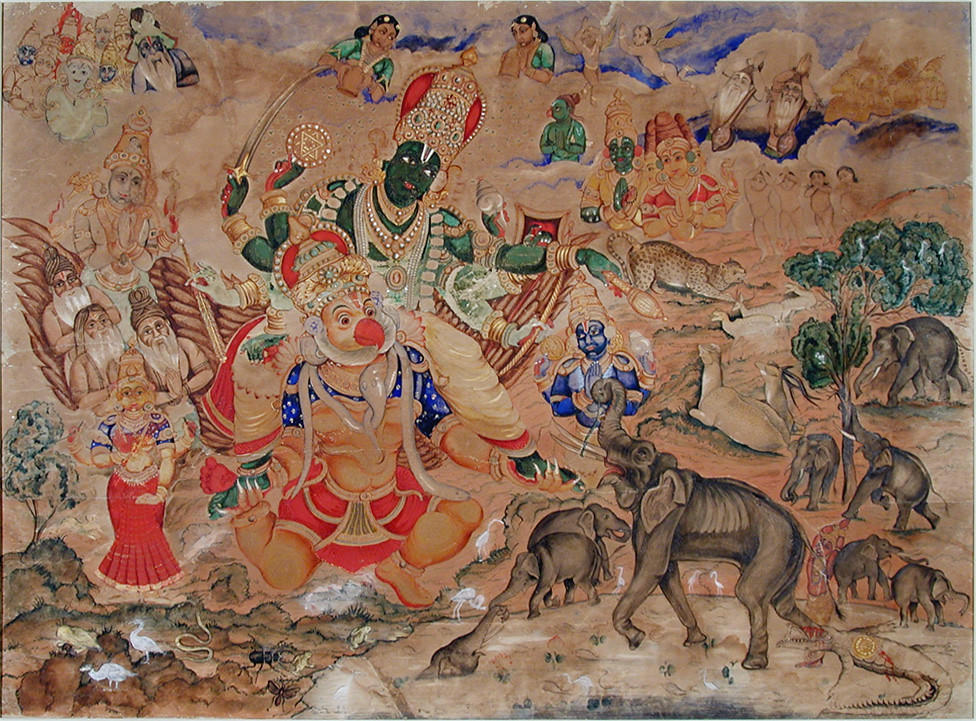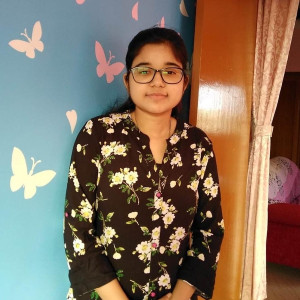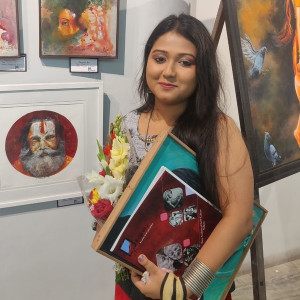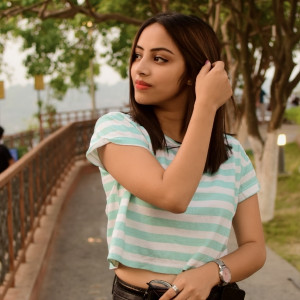The Karnataka city of Mysore is where the traditional South Indian painting style known as "Mysore paintings" traces its roots. This art form has a long history that goes back to the Ajanta period, but in the 15th century, during the rule of the Vijayanagara rulers, it became extremely popular. The paintings, however traditional in style, reveal a profound spirituality. The Mysore paintings, which are based on Hindu mythology or gods and goddesses, are a stunning blend of muted hues, delicate grace, and sparkling gold work.

Mysore Painting of Karnataka: Brief History
As the name implies, the Mysore paintings originated in and around the Karnataka town of Mysore. From the second century BC to the seventh century AD, or the Ajanta period, Karnataka has a long and rich history of cultural arts. The paintings of the Vijayanagar Empire are the source of the Mysore paintings. The artists of the region sought sanctuary in several locations, including Mysore, Surpur, Tanjore, and other places, following the fall of the Empire in the Battle of Talikota, despite the support of the Vijayanagara emperors for the arts. These artists then created unique traditional art forms, like the Tanjore and Mysore paintings, by fusing references and local culture into their works of art.
Evolution of the Mysore Style of Painting
Raja Wodeyar, who took it upon himself to rehabilitate the artists and painters following the fall of the Vijayanagar Empire, was a patron of the Mysore paintings. By employing artists to paint in palaces and temples, his successors carried on the tradition of supporting the arts. Unfortunately, none of these paintings have survived, because Hyder Ali and Tipu Sultan, as well as the British, destroyed them. Still, the painters, known as chitrakars, continued to produce paintings during their rule. An illustration of this is the Narasimha Swamy temple, which is situated between Tumkur and Sira, and was constructed by Nallappa, a staff member of Hyder Ali and Tipu Sultan. The murals and paintings at the Daria Daulat Bagh, the palace of Tipu Sultan, are another example of Mysore paintings.
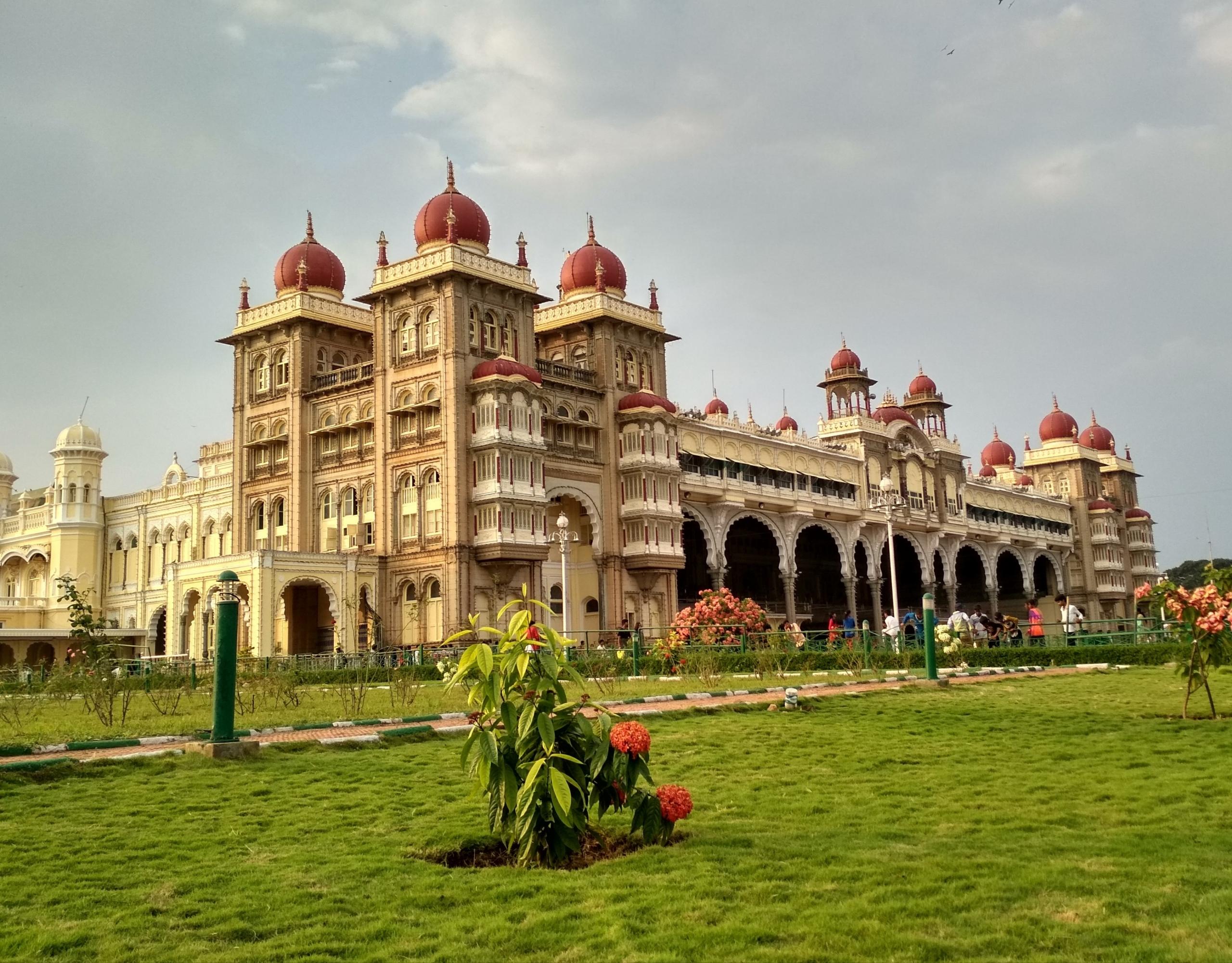
The Wodeyars of Mysore were reinstated as the region's rulers following the death of Tipu Sultan. The Mysore paintings underwent a new phase of growth in the late 18th and early 19th century thanks to Muhammadi Krishnaraja Wodeyar. From this era, the majority of the paintings have survived to this day. Additionally, during his reign, the 1500-page manuscript known as Sritattvanidhi, which contains drawings and instructions, was created. It represents the whole documented knowledge of the Mysore paintings. Currently, one of the most crucial resources for artists to learn is Sritattvanidhi. The Jagan Mohan Palace in Mysore houses the Mysore artworks from this era that are still in existence today. The rulers of Mysore, historical figures, self-portraits, and Hindu mythology are all shown in these paintings.
Notes on Mysore Traditional Paintings
The meticulous technique used to make the Mysore paintings is sturdy and thorough. The canvas or substrate is first made ready. It used to be the ground, wood, paper, or fabric in the past. If it was created from paper pulp, quartz was used to polish it after it had dried. If it was fabric, gruel, gum, and dried white lead paste was used to lay it on a wooden board. Subsequent painters would cover a drawing sheet with layers of newspaper. After that, maida, or refined flour was spread over the sheet. Currently, though, mounted cardboard or cartridge sheets are utilized as the foundation.
After preparing the base, a drawing is created. The tamarind tree's twigs were used to create the earlier sketches. The elements in the drawing that was the farthest from the painting's center or that weren't its primary subject, like the sky, a river, hills, animals, etc., were then painted. Following the completion of them, the focus was directed to the primary characters in the painting, focusing on their facial features, accessories, attire, etc. Additionally, the painting's gesso work or gold overlay is applied at this time.
Mysore Art: Colors and Techniques
Mysore paintings use primary colours. Initially, natural substances like vegetable and floral extracts were used to create the hues. Of course, synthetic hues and even acrylic are also utilized today. A small piece of paper is used to cover the painting once the gesso and colour application are finished and it has completely dried. The picture is rubbed with a soft stone called kalupada kullu, which gives it a gorgeous sheen and lustre when the paper is removed and accentuates the gold work.
Paints, brushes, gold foil, and boards are some of the painting supplies. The hair of squirrels, goats, camels, and other animals is used to make the brushes. Squirrel hair brushes are still preferred by many artists today over synthetic ones.
Themes of Mysore Paintings
Among the several varieties of Mysore paintings are the following:
- Artwork featuring embossing
- Paintings that are embossed but do not have gold foil
- Makki Safeda: This style of Mysore painting uses a lot of white and unquestionably has a border, usually with tones of yellow and black. The primary figures have yellow paint on them.
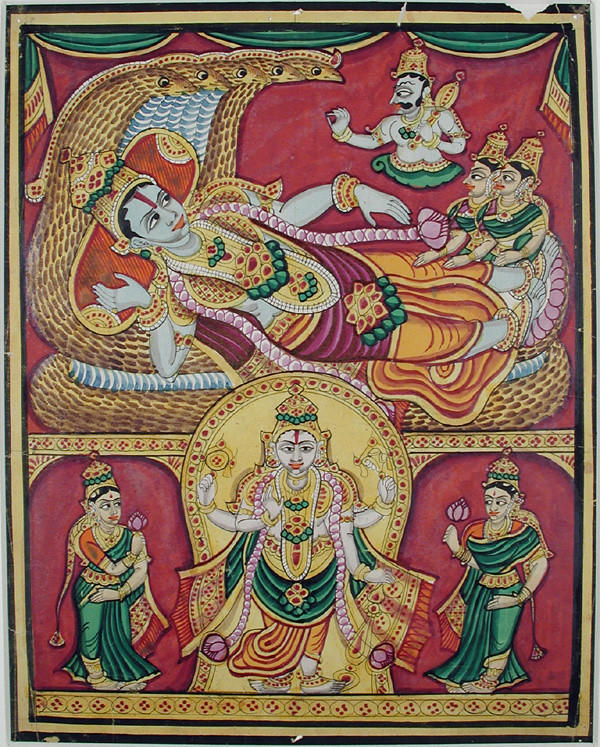
The mythological characters, gods, and goddesses are shown in the paintings in the Mysore style. Goddesses Rajarajeshwari, Dashavathara, Kodandarama, Chamundeshwari, Saraswati, Lakshmi, Shiv-Parvathi, and others are among the most often painted deities. Paintings of the royal family and rulers were also produced in the 19th century. Epicurean heroes are painted with real-life models.
A few traits are shared by the figures shown in Mysore art. For instance, the apparel, jewellery, and haircut are all modelled after the traditional clothes and traits of Mysore. The eyes are fish-shaped, and the chin protrudes roundly. The Mysore palaces' architectural backdrops are likewise primarily those of the Gods and Goddesses, whose feet are respectfully placed atop flowers.
Discover the popular South Indian painting known as the Kalamkari style.
Gesso Work
The signature of all traditional Karnataka paintings was the use of gesso. Gesso is the term for the paste made of glue, gum paste, and white lead powder that is wrapped in gold foil and used as an embossing tool. The Tanjore School's heavy gold relief work contrasts sharply with the low relief and detailed gesso work found in Mysore paintings. In Mysore paintings, gesso was used to paint detailed patterns of garments, jewels, and architectural elements on pillars and arches that typically surrounded the gods.
To keep the gold foil securely in place, the work was started in the morning when the painting's gold work base was still moist. Glazing is done by covering the picture with thin paper and rubbing over it with a soft glazing stone called kalupada kullu after letting the painting dry. The painting is radiant and appears brilliant with a mix of gold and various colours after the thin paper is taken off.

Famous Artists of Mysore Art
K.S. Shreehari
Karnataka's T. Narsipura is the birthplace of K.S. Shreehari. He completed his studies at the University of Mysore. Seetaraman K.V. was his father. K.S. Shreehari continued his family's Mysore painting tradition. Among his most well-known paintings are Panchanaari Turuga, which features an elephant with nine female figures, Virata Vishwaroopa, and Navanaari Kunjara, which features a horse with five female figures. K.S. Shreehari has won numerous accolades in recognition of his extraordinary and committed efforts.
M. Ramanarasaiah
M. Ramanarasaiah possesses a collection of Mysore royal family heirlooms and was employed as a caretaker at the Jayachamarajendra art gallery. He was the palace artist as well. Chandrika, his daughter, is adept at Mysore painting and is following in her father's footsteps.
Cultural Significance of Traditional Mysore Paintings
Mysore paintings are a part of the rich cultural fabric of South India, making them more than mere works of art. They represent scenes from Hindu mythology, saints, and divine figures in great detail, frequently with symbolic connotations, reflecting the philosophical and religious ethos of the time.
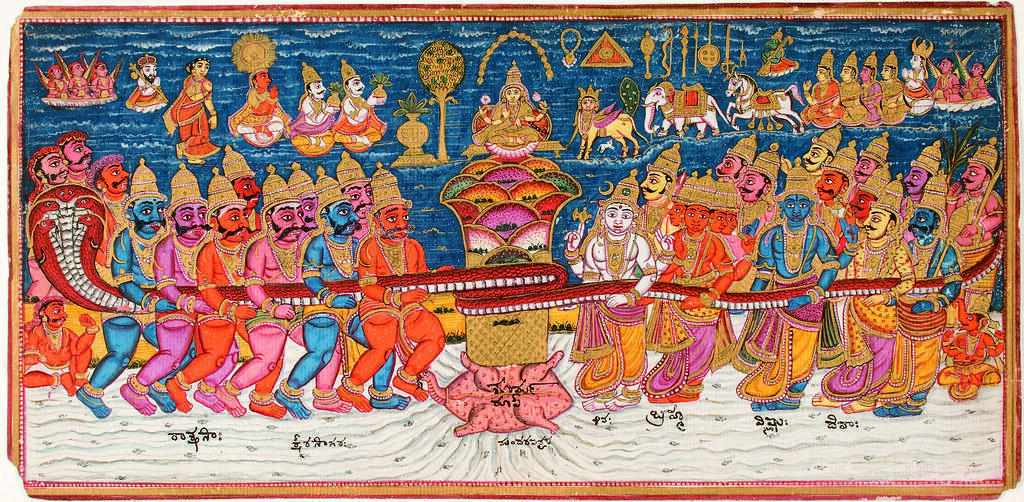
While traditional subjects are still popular in the present period, artists are experimenting with new techniques and adding contemporary features. Artists and art enthusiasts throughout the world have come to recognize the expertise and complexity that go into creating Mysore paintings.
Mysore paintings are being preserved and given new life. Private collectors, art institutions, and the Indian government all have a big part in this. To maintain the relevance and survival of this antiquated art form, workshops, exhibitions, and training courses are offered.
Unravel the history of South India's oldest style of painting, the Tanjore style.
Mysore Paintings: FAQs
What are Mysore paintings?
Originating in and around the Karnataka town of Mysore, Mysore painting is a significant branch of classical South Indian art that was fostered and supported by the Mysore monarchs. The majority of these paintings feature scenes from Hindu mythology as well as Hindu gods and goddesses.

